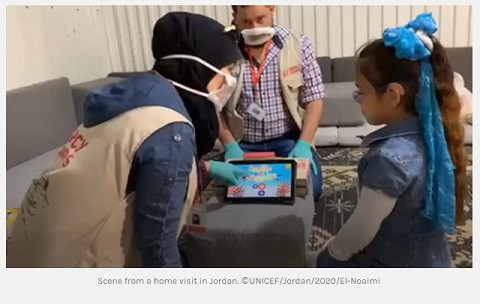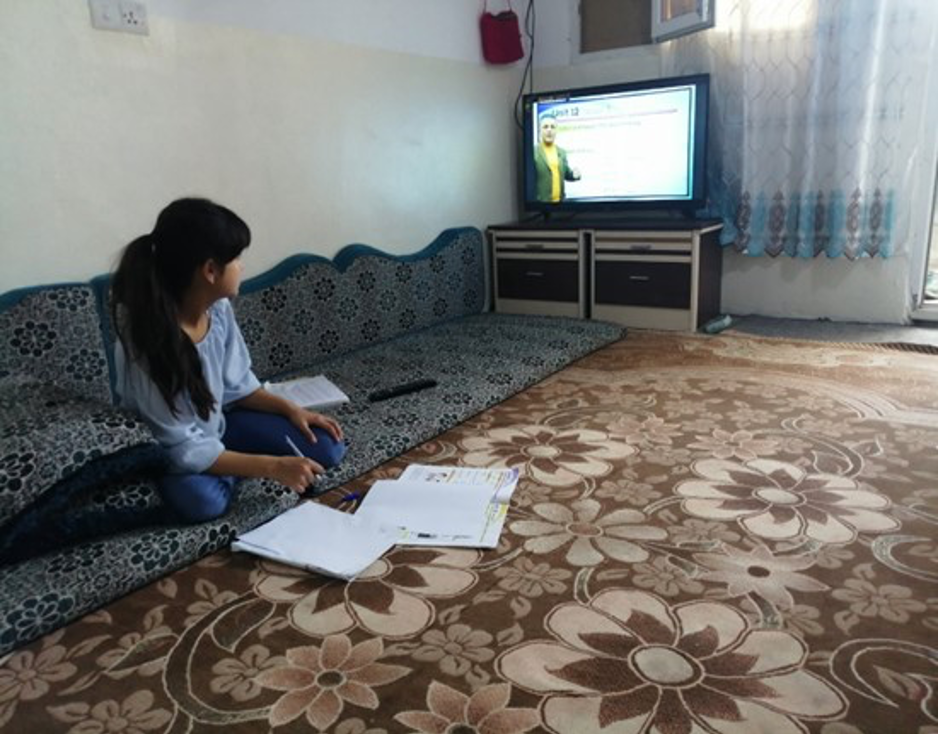
GCED Basic Search Form
Quick Search
You are here
News

By Janet Lennox and Wongani Taulo
Since COVID-19 burst onto the world stage, headlines have mounted about the millions of children suddenly out of school due to the closures during countries’ lockdowns. Lessons from earlier school closures, such as the Ebola crisis in West Africa, tell us that the most marginalised children may be left behind. The 2020 Global Education Monitoring Report also sounds the alarm, warning that educational opportunities continue to be unequally distributed, leaving the most marginalised children at higher risk of further exclusion because of COVID-19-related school closures. That begs the question – what about the 1 in 5 children who were previously out of school or those in school but on the margins, at a high risk of dropout before the COVID-19 pandemic struck?
With COVID-19 school closures, the world has witnessed unprecedented efforts among global education actors and government to safeguard the education of children and ensure continuity of learning while children are at home. Innovative remote learning modalities have been explored to reach children wherever they are, and, in the processes, highlighted the fact that learning can take place even beyond the school gates. While some of these strategies have been successful, some have not, and not all children have been successfully reached. However, one point is clear, even when children are not in school, they can still be given opportunities to learn and participate effectively to enjoy their right to education. This now begs the question: can countries’ responses to COVID-19 overcome barriers to learning for all children, beyond those affected by current school closures? Can those remote learning strategies that have proved effective to reach the most marginalised children be adopted and adapted to reach the most marginalised children including those who were out of school pre-COVID-19?
Catalyst for change
Children with disabilities. According to analysis from 2016 and 2018, certain types of disabilities related to sight, hearing, and mobility may be the single most serious barrier to education, with a school attendance gap of about 30 per cent compared to children without disabilities.
Innovative COVID-19 learning strategies have the potential to engage more children, including those who were not reached previously, through schools, including preparing teachers for inclusive learning, or through other flexible pathways. For example, making accessible digital content available on the growing number of online learning platforms and pairing these with tools and resources for learners with disabilities and their parents is an opportunity to promote greater inclusion through the thoughtful use of technology. Accessibility features may include audio narration, sign language video, and simplified text, which can help children with disabilities and those without to tailor their interaction with learning materials to meet their specific learning needs and preferences. In late April 2020, the Ministry of National Education in Turkey launched a mobile application for special education learners – available through the Ministry of National Education website – aimed at ensuring continued learning opportunities for children with hearing or visual impairments, intellectual disabilities, or autism spectrum disorders. As of 2 June 2020, 175,000 users had downloaded the App and 370,000 users were accessing its training videos, recommended activities, special education lessons and supplementary resource books.
Refugees. Children who are displaced across or within borders are more likely to have their education disrupted. Only half of refugee children attend primary school, and less than a quarter (22 per cent) are in secondary school. Girls in conflict-affected settings are 2.5 times more likely to be out of school compared to those living outside conflict zones.
During the school closures which began in mid-March, UNICEF, and Mercy Corps, have undertaken monthly home visits to almost 700 children with disabilities that are enrolled in school in Azraq and Za’atari refugee camps in Jordan. The focus is on rehabilitation, including physical and speech therapy. As shown in the picture, one innovation has been the use of transparent masks, so that deaf children can still lip read. Printed workbooks for Grades 1 to 6, based on children’s individual learning plans, were provided to all children. Parents have been provided with learning activities delivered through WhatsApp groups with a list of explanatory video recordings, voice recordings, and links to educational apps to support continued learning at home. In addition, in Village 5 of Azraq Camp, all 80 children with disabilities have been provided with a tablet pre-loaded with learning materials, as well as disability accessible apps and free data packages.
Language. In North Iraq, the COVID-19 remote learning response plan seized the opportunity to remove language barriers. UNICEF helped education authorities to launch televised lessons via satellite TV for all grades in seven languages and dialects: Kurdish, Soran, Badini, Arabic, Turkmani, Syriac and English. The broadcasts have kept an estimated 370,000 boys and girls learning.
For many marginalized children, including those with disabilities and refugees in camps, learning during COVID-19 school closures has presented a critical challenge to these children who were already on the fringe of education systems. These disruptions have sparked experimentation with a whole array of digital and non-digital learning platforms and resources. If used thoughtfully, they have the potential to help reimagine the education system to what we want; one that includes all learners, no matter their identity, background, or ability.

URL:
